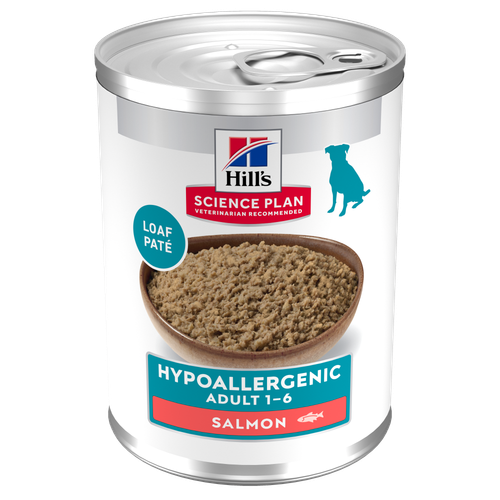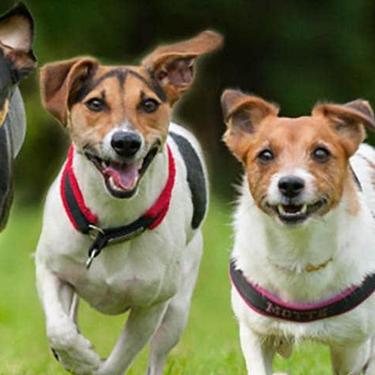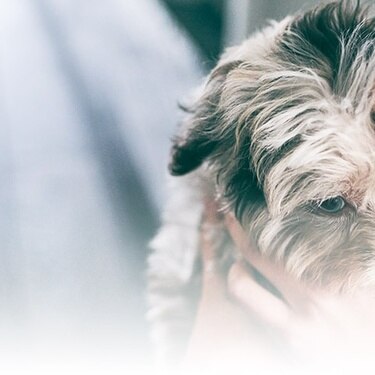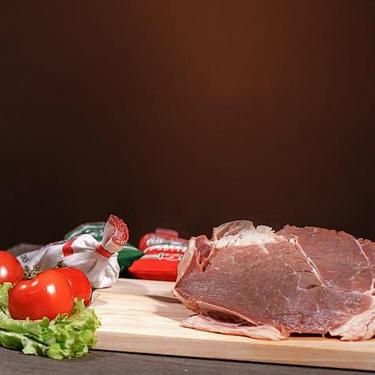
-
Find the right food for your petTake this quiz to see which food may be the best for your furry friend.Find the right food for your petTake this quiz to see which food may be the best for your furry friend.Featured products
 Mature Adult Dog Food
Mature Adult Dog FoodHill's Science Plan Mature Adult Multipack Wet Dog Food with Chicken & Beef are complete premium pet foods for mature adult dogs from 7 years. Your dog will love these deliciously smooth and savoury minced loaves, formulated to deliver the appropriate amount of energy to support the needs of adult dogs.
Shop Now Adult Wet Dog Food with Beef
Adult Wet Dog Food with BeefHill's Science Plan Adult Multipack Wet Dog Food with Chicken, Beef & Turkey are complete premium pet foods for adult dogs from 1 year. Your dog will love these deliciously smooth and savoury minced loaves, formulated for balanced nutrition and overall health.
Shop Now Puppy Food
Puppy FoodHill's Science Plan Puppy Multipack Wet Dog Food with Chicken & Beef are complete premium pet foods for growing puppies from weaning until 1 year old and for pregnant and nursing dogs. Your puppy will love these deliciously smooth and savoury minced loaves, formulated for balanced nutrition and overall health.
Shop NowFeatured products Adult Multipack Wet Cat Food with Beef, Ocean Fish & Chicken
Adult Multipack Wet Cat Food with Beef, Ocean Fish & ChickenTender chunks in gravy for cats, with high-quality protein to maintain lean muscle. With vitamin E and omega-3s & -6s for healthy skin and balanced minerals to support healthy vital organs.
Shop Now Mature Adult Wet Cat Food with Chicken
Mature Adult Wet Cat Food with Chicken
Tender chicken chunks in gravy for mature adult cats. Made with easy-to-digest ingredients, high-quality protein for lean muscle maintenance and antioxidant vitamins C+E for optimal health.
Shop Now Light Adult Multipack Wet Cat Food with Chicken & Ocean Fish
Light Adult Multipack Wet Cat Food with Chicken & Ocean FishTender chicken chunks in gravy for cats, with L-carnitine and fewer calories for ideal weight management. Packed with high-quality protein, omega-6s, and vitamin E for shiny fur and healthy skin.
Shop Now -
Dog
- Dog Tips & Articles
-
Health Category
- Weight
- Food & Environmental Sensitivities
- Urinary
- Digestive
- Joint
- Kidney
-
Life Stage
- Puppy Nutrition
- Adult Nutrition
- Senior Nutrition
Cat- Cat Tips & Articles
-
Health Category
- Weight
- Skin & Food Sensitivities
- Urinary
- Digestive
- Kidney
-
Life Stage
- Kitten Nutrition
- Adult Nutrition
Featured articles The Right Diet For Your Pet
The Right Diet For Your PetIn people, the right diet is very important. If you are eating the wrong way for your metabolism, activity level, age and lifestyle you could end up with health issues.
Read More The Incredible Science Behind Your Pet's Microbiome
The Incredible Science Behind Your Pet's MicrobiomeLearn what your pet's microbiome is, how it contributes to your pet's gut and overall health, and why nutrition is important in maintaining healthy microbiomes.
Read More Show some love with wet foods: a great choice for pets with health issues
Show some love with wet foods: a great choice for pets with health issuesShow some love with wet foods: a great choice for pets with health issues.
Read More -


Small and miniature dogs, being little and cute or small and scrappy, are experts at getting the most coddling. They can also excel at eliciting more treats out of their owners. This means that owners have to be on their guard, because small and miniature dogs are just as likely to be overweight or obese as their larger-breed counterparts.
With weight issues tipping the scales as one of Europe's biggest pet problems, and one that's growing, it’s no wonder that vets are getting nervous. After all, canine obesity is a major contributing factor in health problems such as:
- Arthritis
- Diabetes
- Pancreatitis
- Breathing problems
- Shortened life expectancy
Since some small breeds are already prone to respiratory concerns (especially those with shorter noses, such as Pugs), even a little bit of excessive weight can be a cause for concern.
Such serious health risks make it clear that we should help our four-legged friends keep at a healthy weight, but what causes little dogs to gain weight in the first place?
Breed Type
Some small dog breeds are renowned for their propensity to pack on the pounds:
- Cairn Terriers
- Dachshunds
- Scottish Terriers
- Cavalier King Charles Spaniels
- Cocker Spaniels
If you have a small dog that's prone to weight gain due to their breed you'll have to be extra-diligent in avoiding excess weight gain.
The right food
If your dog eats meals that are high in calories, they’re likely to start looking a little overweight after a while, unless they’re a real fitness fanatic. Unfortunately, sporting that chubby look can seriously impact long-term health. For most little dogs, combining calorie-controlled food with regular exercise is a good way to keep fit and healthy.
Portion it out
Portion control can be a big problem when it comes to feeding little dogs. To avoid problems, some people find it helpful to measure out a daily food and snack amount into a separate container each day, and then feed their dog only what’s in the container, nothing more. Some prefer to measure food out at each meal, whereas others find that calorie counting is worth the extra effort .
Whatever your method, controlling the portion of your dog’s daily food intake is important to make sure they are getting just the right amount. Start with the amount listed on the label of your dog’s food, and adjust as needed from there.
Snacks
Pets (and people) gain weight when they consume more calories than they burn. Portion control of main meals is key to avoiding weight gain, but we can't forget about snacks. Small dogs simply need smaller snacks. Find treats for small dogs with low calories, or break larger treats into smaller pieces to satisfy your small friend without piling on the calories.


Tasty Tips
Labels will tell
Carefully checking the labels on your dog’s food and treats will help you fight excessive weight gain. There you’ll find a full set of instructions for proper feeding amounts. Make sure to feed for your dog’s ideal, not current, weight. Remember that everything your dog eats, including treats, factor into their daily calorie intake – which ultimately affects the waistline.
BCS
Body Condition Score, or BCS, is the ratio of lean to fat (or adipose) body mass. Lean body mass is the weight of your dog’s bones, muscles, etc. Fat body mass, or adipose tissue, is simply that – fat. The higher the BCS, the more weight your dog will need to lose, with the ideal being a BCS of 3 out of 5. If your dog’s BCS is more than 3, you should ask your vet for a healthy weight-loss plan. Here is a handy tool to monitor your dog’s BCS at home:
Body Condition Score

Tips for workout success
- Start slow
Aim for manageable goals; slow and steady weight loss is the aim here. Your dog will need to take it slow at the beginning to avoid overexertion. Work with your vet to determine a healthy ideal weight and exercise plan. It may take months for your dog to get to their ideal weight so don’t get discouraged. - Think outside the box
…or just get outside! One bonus of helping your pet lose weight is the fun new activities you can try together. Maybe take up swimming at your local lake for low-impact exercise that will be easy on your dog's joints. If it’s cold outside, supervise your small dog carefully while letting them doggie-paddle in a cool (not cold) bath. - Pick something you like, too
Not a runner? You won't need to put yourself through the paces just to slim down your dog. Throwing a ball around, going for a long stroll, or navigating an agility course are all great alternatives to going for a jog. Your little companion will love doing whatever you do. - Resist those eyes!
When your dog is gazing up at you, pleading for that tasty morsel, be strong! Less calories in means less excess weight, and calorie-rich human food is one of the biggest culprits when it comes to canine weight gain
.


One of our staff authors prepared this article for you
Related products

Hill's Science Plan Puppy Multipack Wet Dog Food with Chicken & Beef are complete premium pet foods for growing puppies from weaning until 1 year old and for pregnant and nursing dogs. Your puppy will love these deliciously smooth and savoury minced loaves, formulated for balanced nutrition and overall health.

Hill's Science Plan Adult Multipack Wet Dog Food with Chicken, Beef & Turkey are complete premium pet foods for adult dogs from 1 year. Your dog will love these deliciously smooth and savoury minced loaves, formulated for balanced nutrition and overall health.

Hill's Science Plan Hypoallergenic Adult Wet Dog Food with Salmon is a complete premium pet food for all adult dogs from 1 year. This savoury tinned loaf is specially formulated for dogs with delicate skin and stomachs. It features a single novel animal protein source and is grain-free.

Hill's Science Plan Mature Adult Multipack Wet Dog Food with Chicken & Beef are complete premium pet foods for mature adult dogs from 7 years. Your dog will love these deliciously smooth and savoury minced loaves, formulated to deliver the appropriate amount of energy to support the needs of adult dogs.
Related articles

Learn effective tips for feeding a dog that's a picky eater and ensure proper nutrition for a finicky eater. Discover tips for pet parents at Hill's Pet UK.

Many human foods are dangerous to dogs. Read about 5 of the worst toxic food offenders that can kill your dog - and how much it takes to hurt them.

How, when and what to feed your new puppy is an important decision, learn more about the things to consider for feeding your puppy.

Learn about the potential health risks of a raw diet for dogs and why they aren't the best option for your pup or you.

Put your dog on a diet without them knowing
Our low calorie formula helps you control your dog's weight. It's packed with high-quality protein for building lean muscles, and made with purposeful ingredients for a flavourful, nutritious meal. Clinically proven antioxidants, Vitamin C+E, help promote a healthy immune system.
Put your dog on a diet without them knowing
Our low calorie formula helps you control your dog's weight. It's packed with high-quality protein for building lean muscles, and made with purposeful ingredients for a flavourful, nutritious meal. Clinically proven antioxidants, Vitamin C+E, help promote a healthy immune system.

